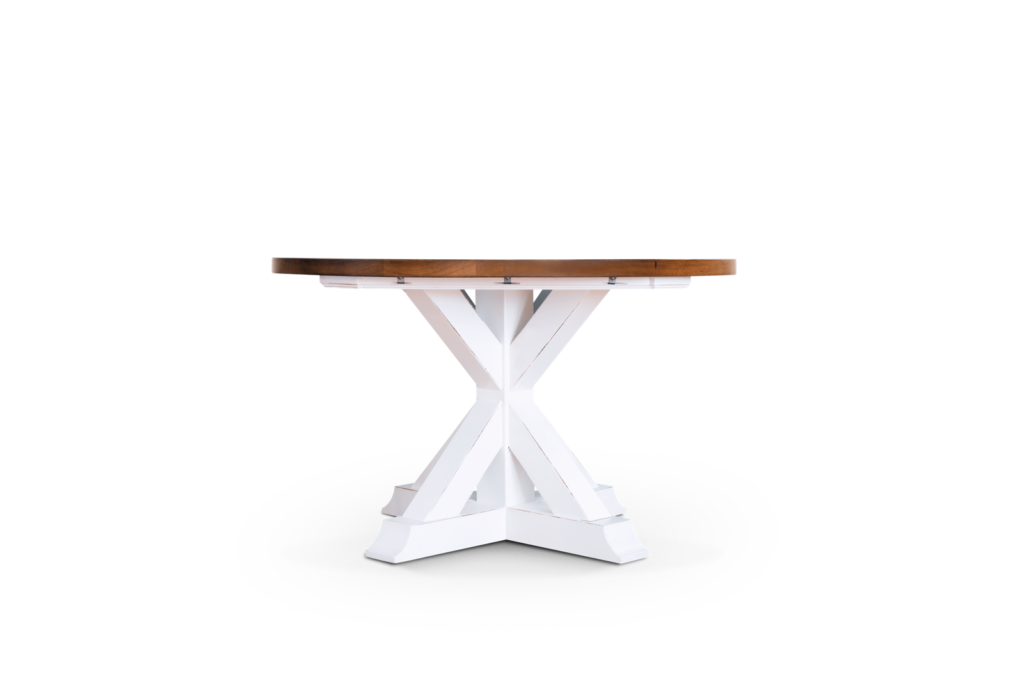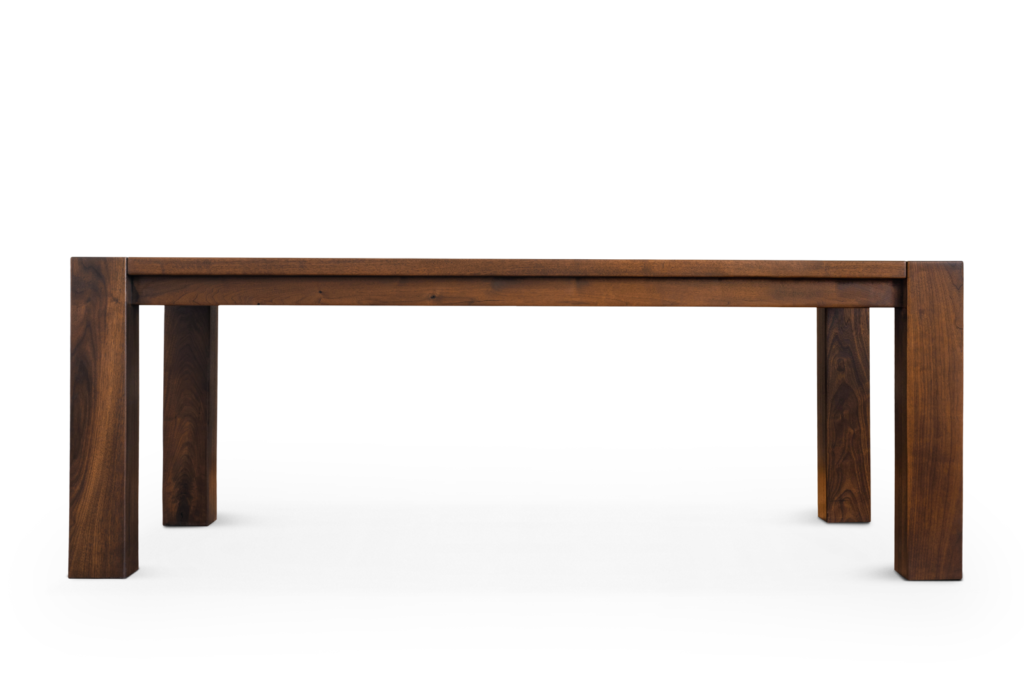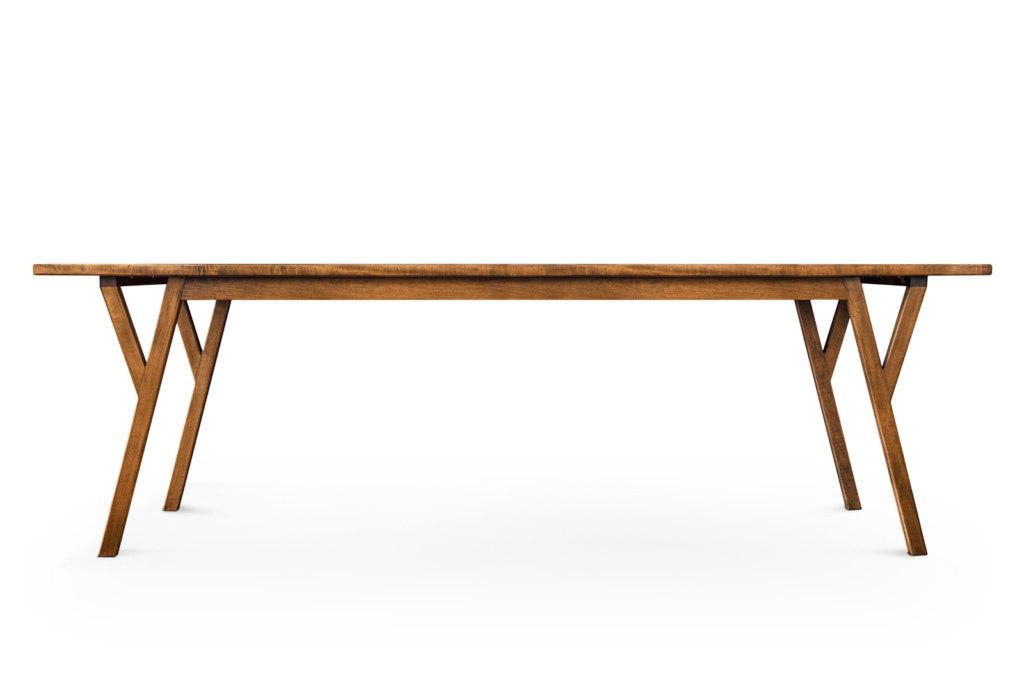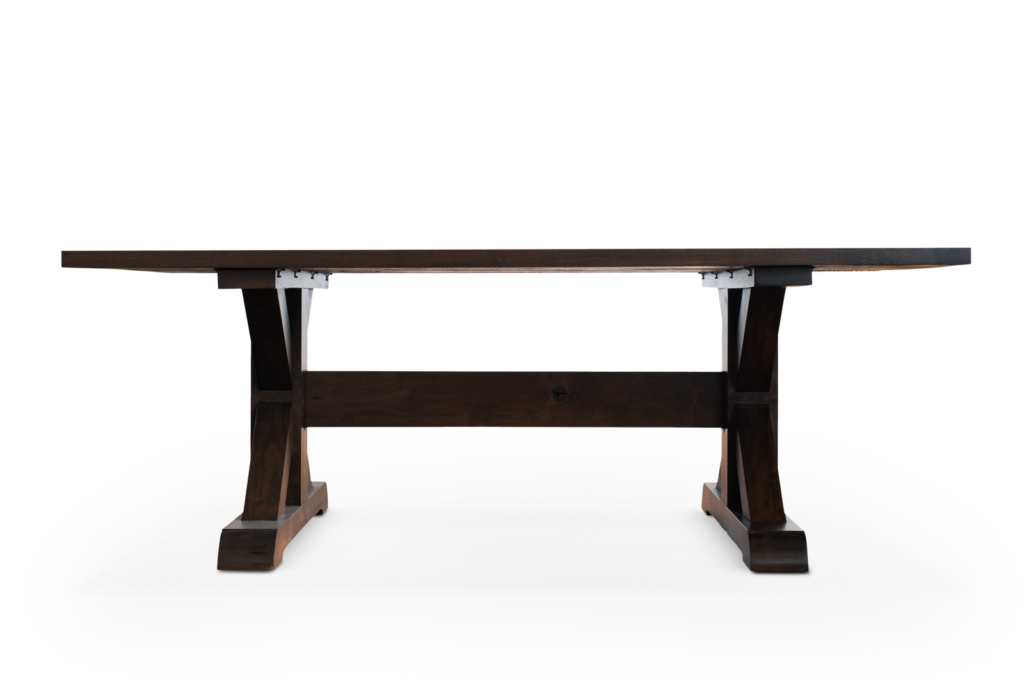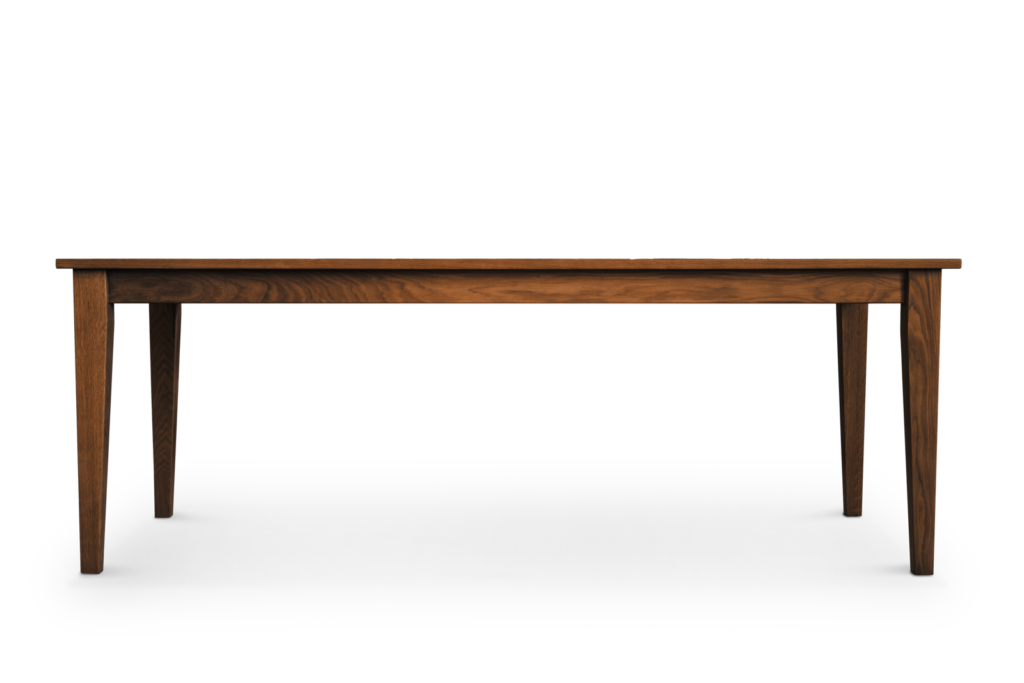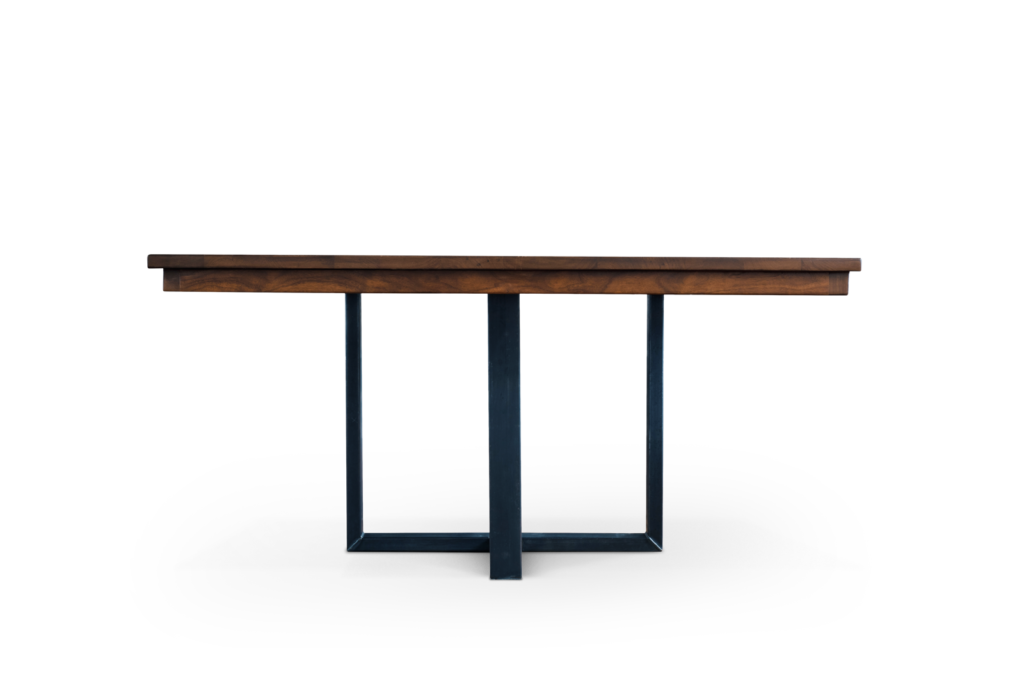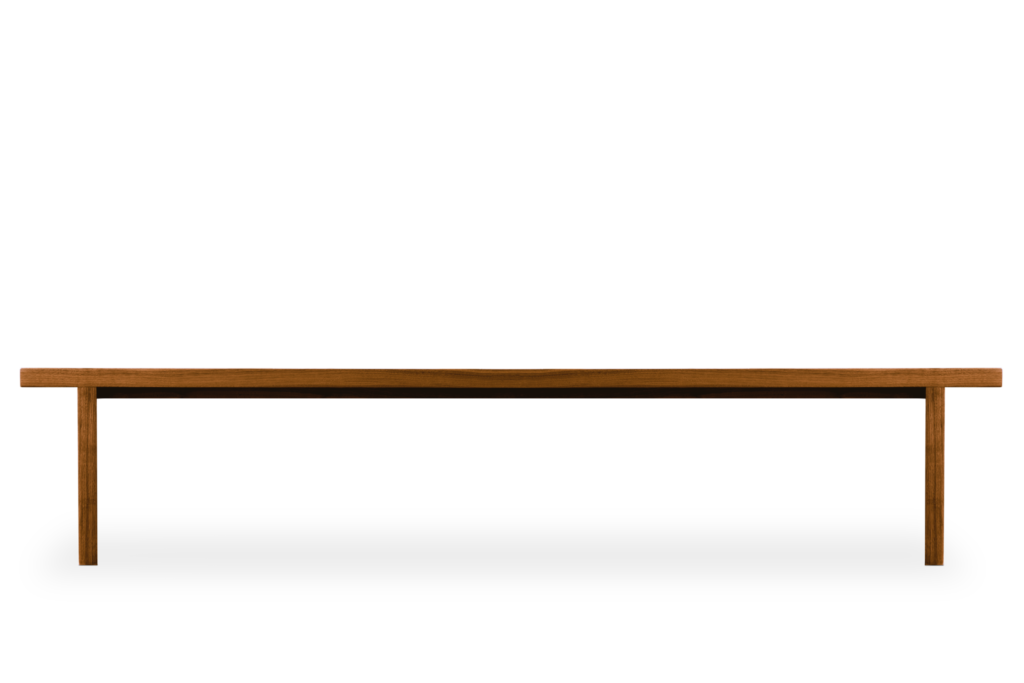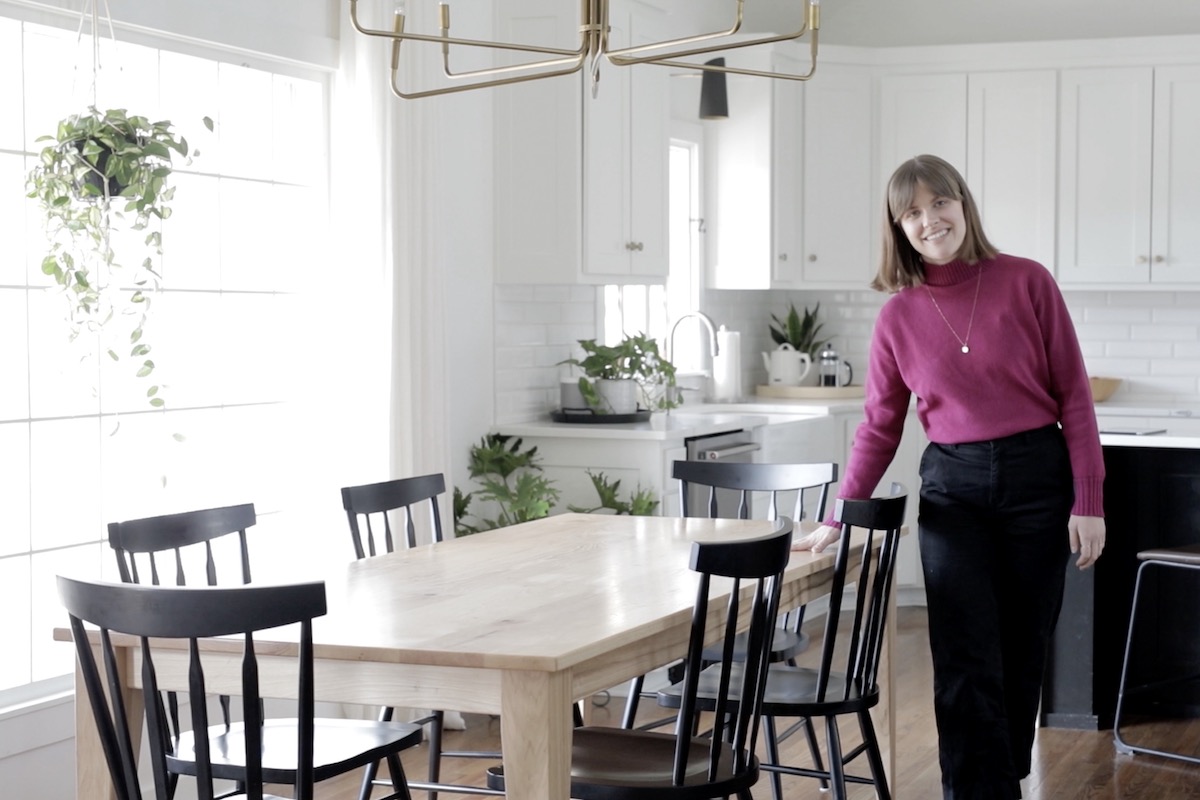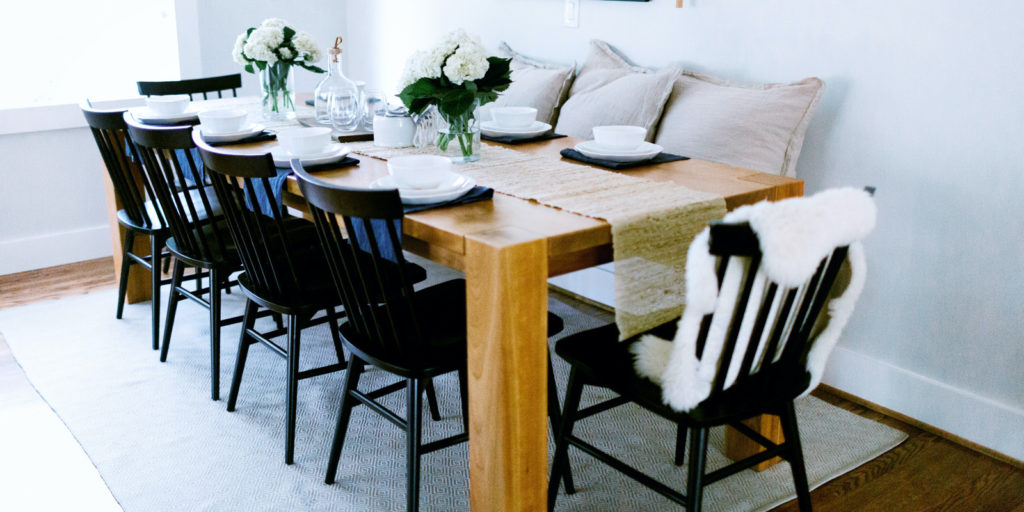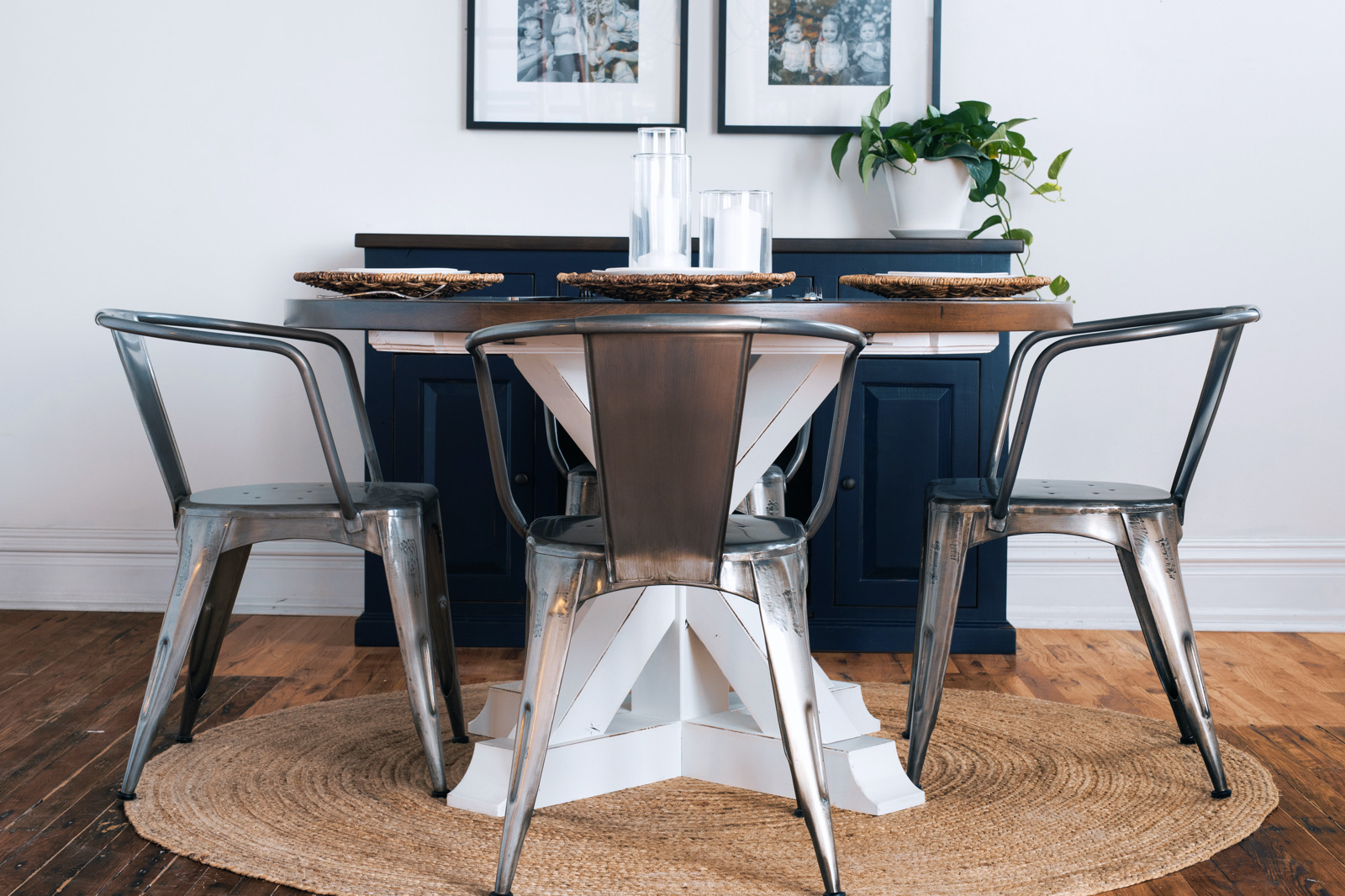
Rug or No Rug for the Dining Room?
When decorating a dining room, the rug question is bound to come up. Rug, or no rug? There are various reasons design-wise to accompany your table with a rug, but there are also logistic reasons as well.
We are here to clear your rug fog up. Down below are examples of rug situations you might find yourself in. So, strap in for a lot of rug talk.

Pictured above is our Yorkshire Round Table
Yes, Rug.
There are a smorgasbord of reasons to get a rug for your dining room table. Let’s start with the design reasons and get to the more logistical reasons later.
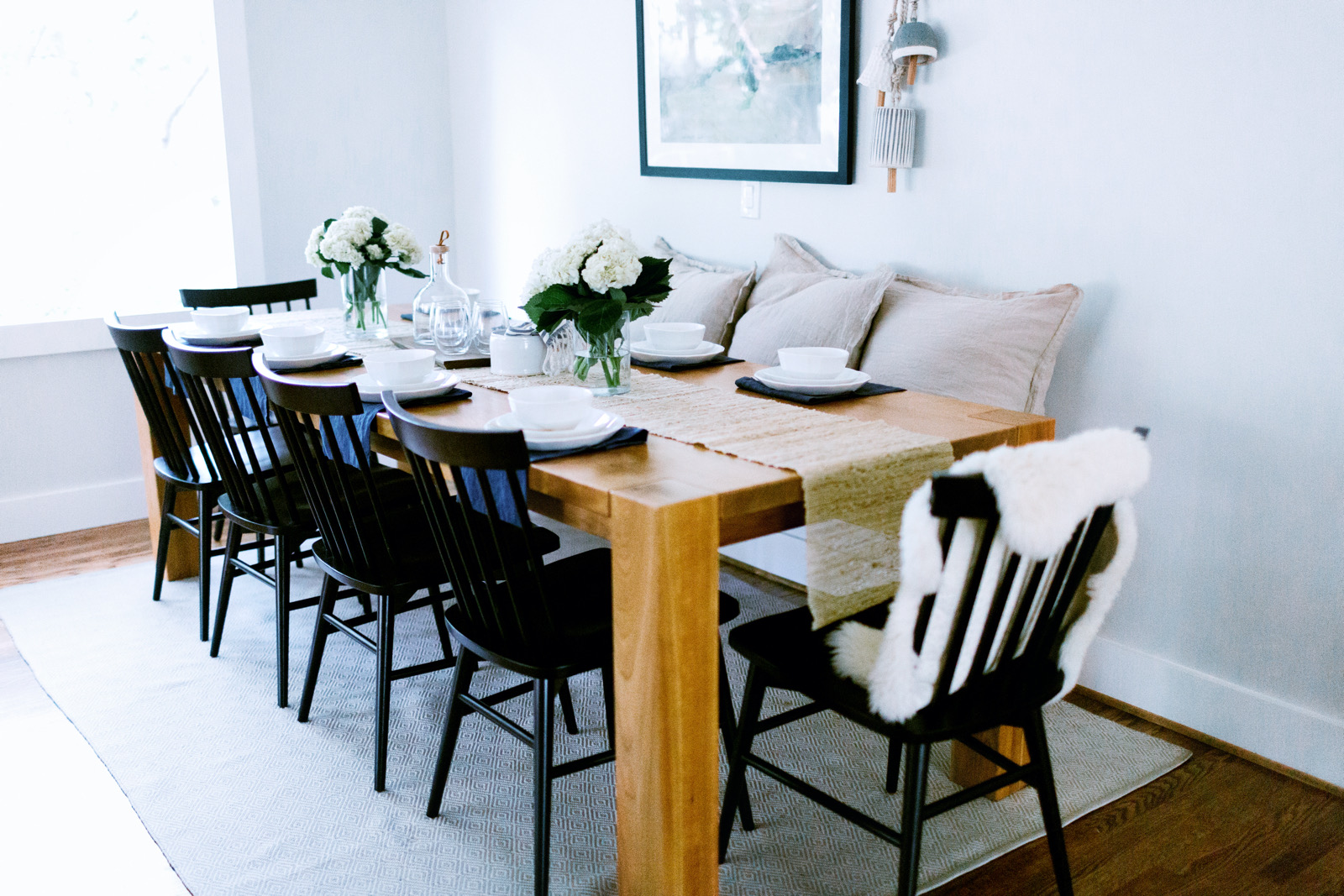
Above is our Breckenridge Table
Design Reasons for Rugs
From a design perspective, rugs can be helpful when the tone of the wooden table and floors are too similar. The rug can break up the floor and table so it doesn’t feel matchy-matchy.
This same reasoning can also be applied when there are other wood furnishings around the table. If you have an open-concept dining room/kitchen and the cabinets are also a natural wood color, it can feel like a wood overload. This is when a rug comes in handy.
Not only is too much wood color a reason for a rug, but also too much wood texture. Even if wood furnishings are painted, something needs to break up the same smooth, wood texture. That something could be a rug! This way there is some variation in texture in your dining room, especially if your dining chairs are also wood.
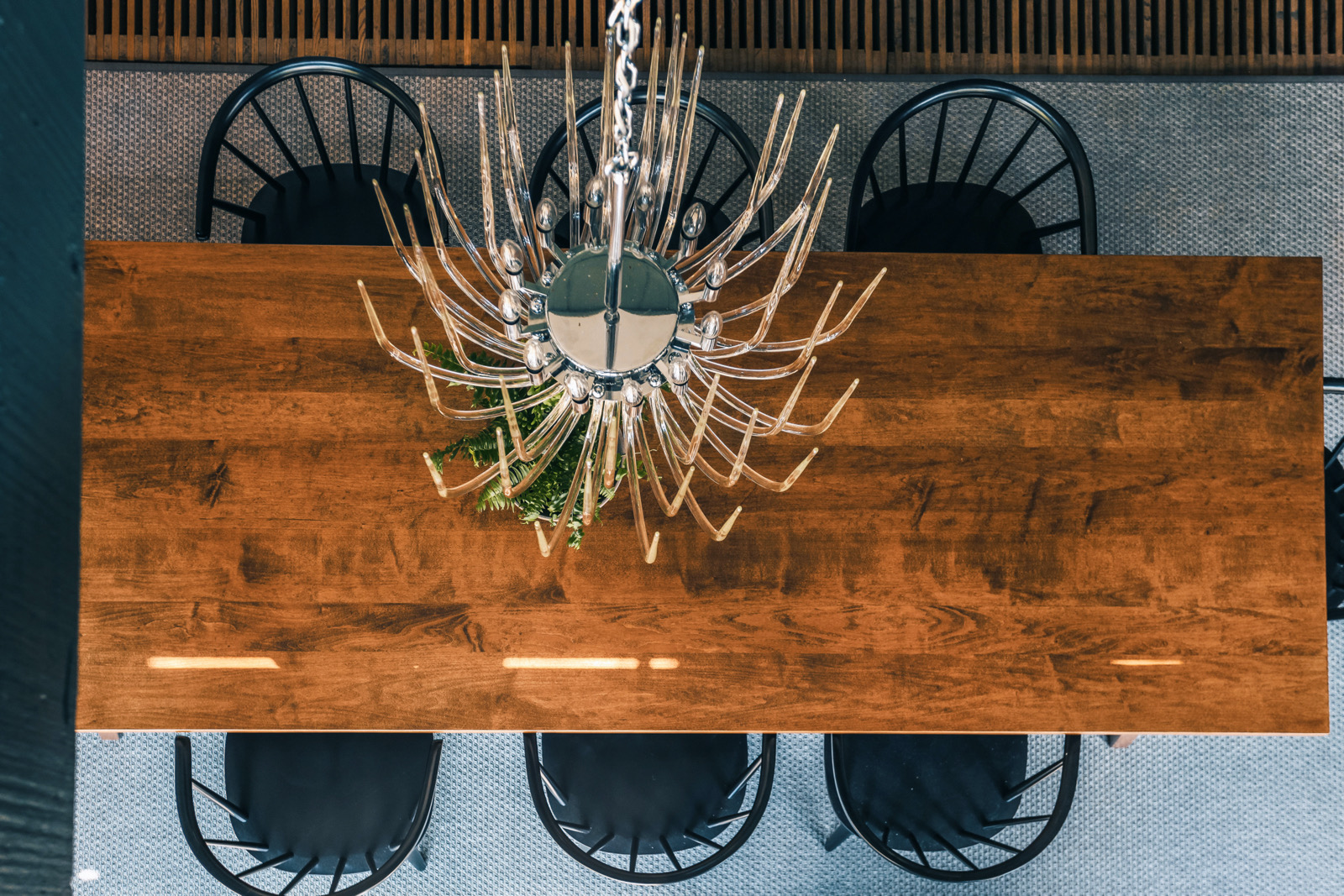
Pictured above is the lovely, rugged Rosedale Table in the Atrium House
Functional Reasons for Rugs
Apart from design reasons, there are also functional reasons to put a rug under your dining room table. Rugs can also help manage messes and crumbs that might happen during dinner time. It can act as a catch-all for meals.
A rug can also protect your precious hardwood floors from being scuffed and scratched. The dining room is usually a high-traffic area, so scuffs happen often. Especially when kids are scooting dining room chairs in and out constantly. A dining room rug can prevent these scratches and keep your floors looking spotless.
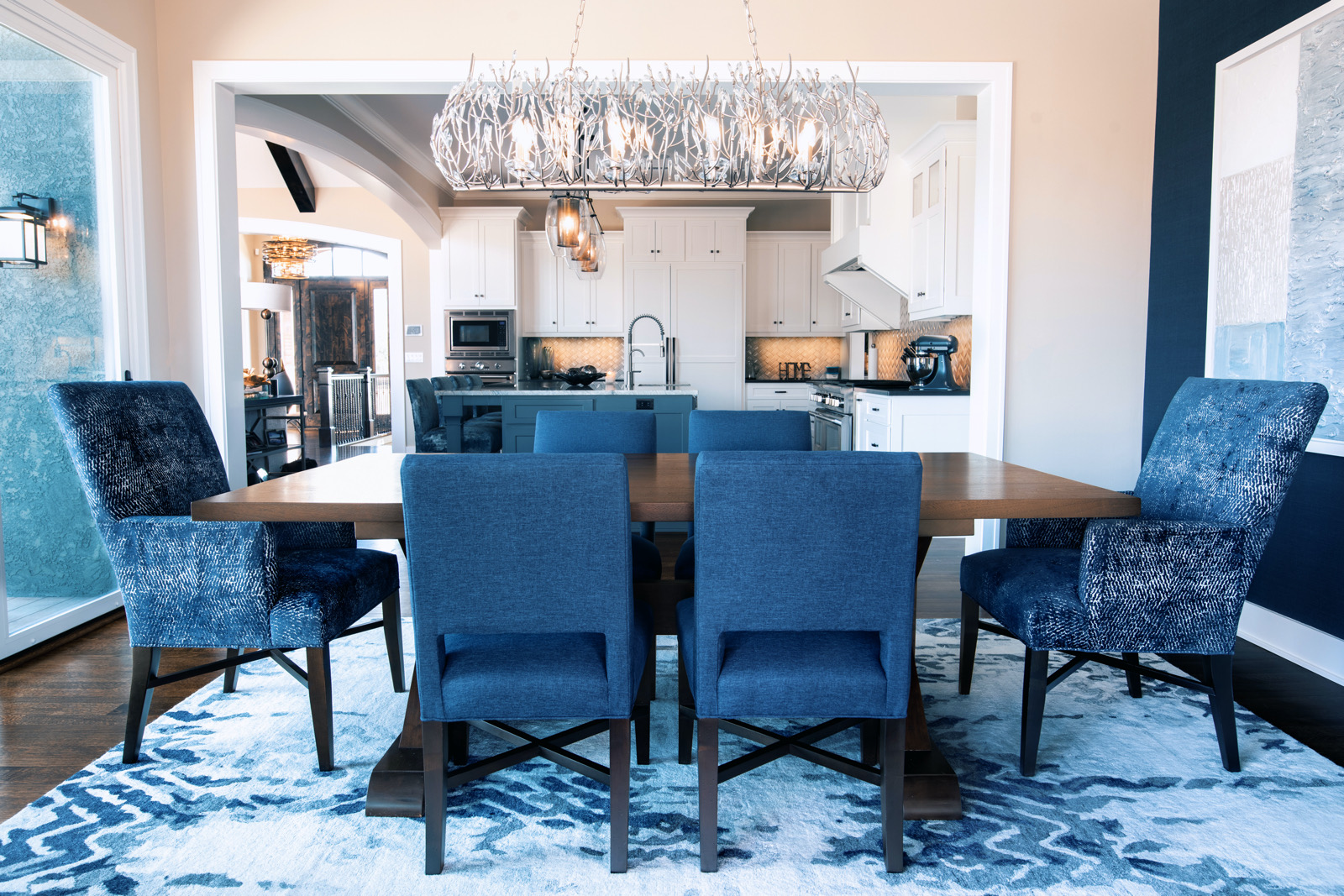
Above is our Conway Table
No Rug.
In terms of design reasons to go no rug, if you already have a variety of colors and textures, a large area rug can take the visuals a little too far. Most dining room rugs have to be pretty large to accommodate dining room sets, so it becomes a main visual in the room. This is something to look out for especially if it is a patterned rug.
If you want your dining table set to be the room’s focal point, opt out of the rug. Especially if your table provides a color contrast already, a rug isn’t necessary.
Logistically, rugs can protect from crumbs and scratches, but cleaning them is a little more laborious than just sweeping the wood floors. It can also be hard to find rugs that fit your specific design style, not to mention budget! Dining-sized rugs can be pretty costly.
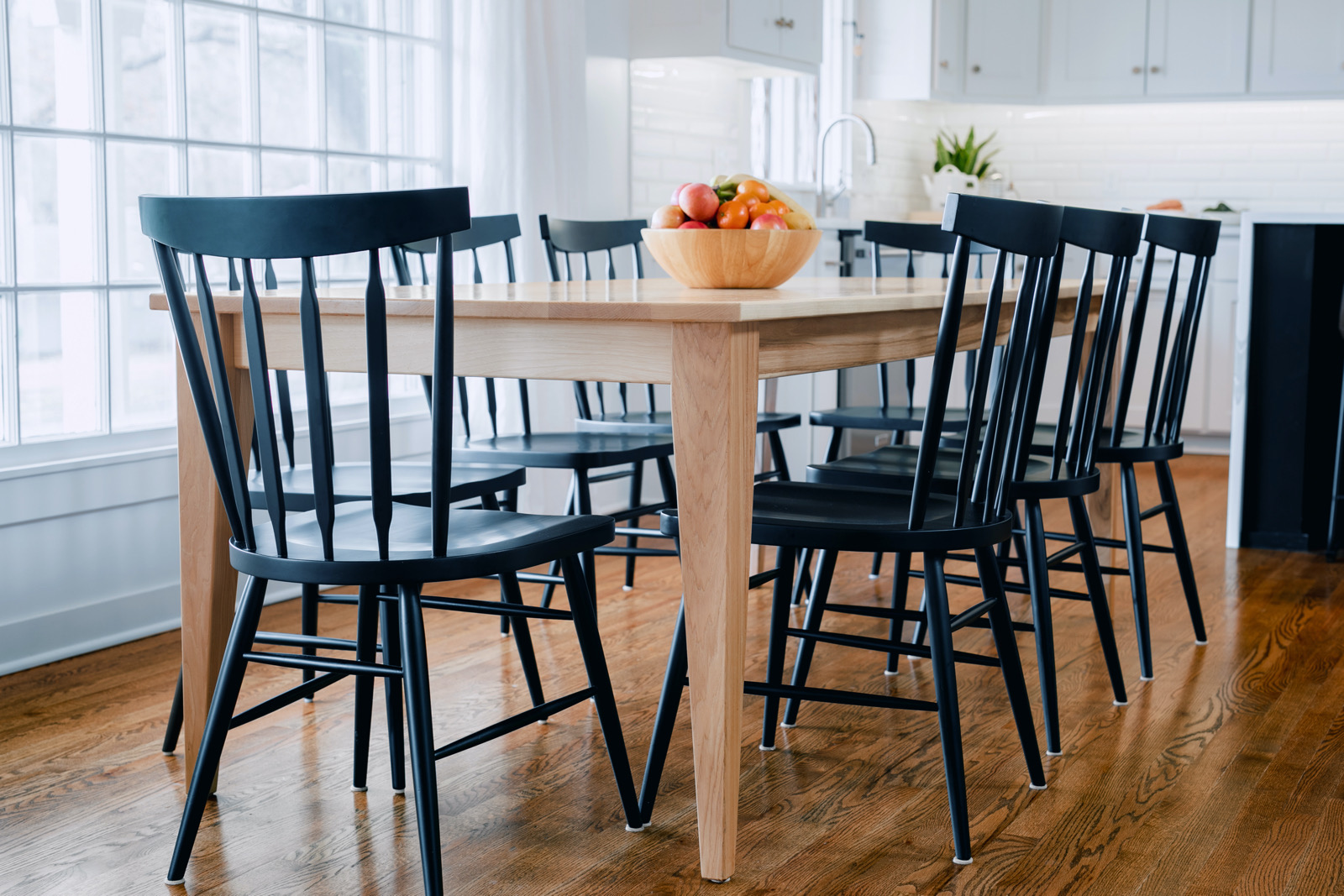
Above is our Colby Table
Okay, I Want a Rug, But What Size?
When picking out a rug to go under the table, most people struggle to know what size to get. They want a rug that looks purposeful but does not swallow the room. Well, look no further, we got the measurement knowledge.
With dining room rugs, we need to pick a size that fits the table and chairs as well. We have a general 3-foot rule at Unruh when it comes to dining room tables, but we recommend going even further with a rug. This is so chairs can comfortably be moved around the table without the annoyance of going on and off the rug. So, going four feet longer and wider than the measurements of your table tends to work the best.
If you want to measure from where your chairs sit, measure so the rug is 18 inches longer than the end of your chair. This is the better way to go if your chairs are bigger than standard chair sizes.

Above is our square Brecker Table with the Coleson Bench
When in Doubt, Tape it Out
If you have space anxiety (like a lot of us), just tape it out! Take some painter’s tape and map out whatever dimensions you are considering for your rug. This way you can walk around the table and chairs to make sure it feels right and the rug doesn’t obstruct anything else in the dining room.
